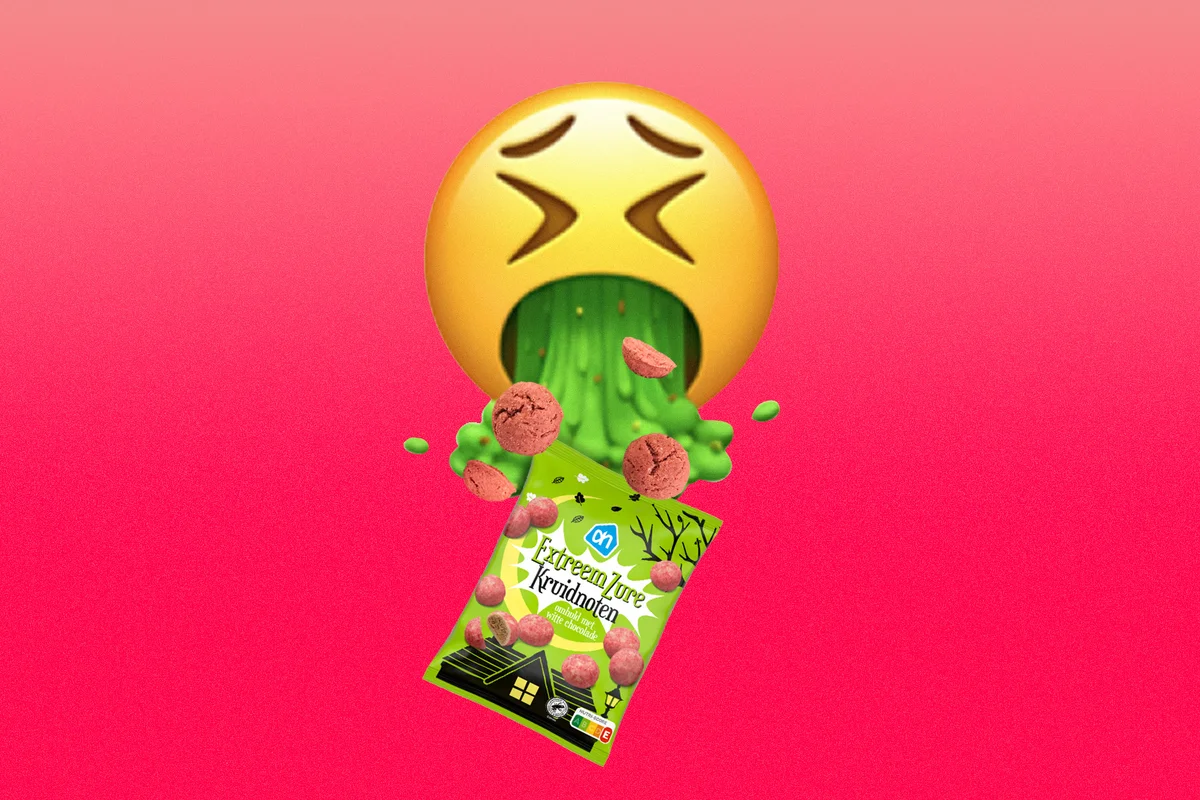Copyright slate

Sign up for the Slatest to get the most insightful analysis, criticism, and advice out there, delivered to your inbox daily. Fall is here, and if you—like me—happen to live in the Netherlands, that means two things: rain and pepernoten. Traditionally, these small, round cookies were sold around Sinterklaas, a Christmas-like holiday held in December that until only a few years ago involved everyone and their uncle dressing up in blackface. (Look it up.) Nowadays, courtesy of capitalism, pepernoten show up in supermarkets as early as September, months before most children start leaving their shoes at the fireplace before bedtime for the Dutch Saint Nick to stuff with toys and candy. Pepernoten have also become available in an ever-expanding assortment of flavors. When my parents were growing up, they had to make do with the standard cinnamon-and-ginger variety, baked according to a recipe that had remained largely unchanged since colonial times, when the Dutch East India Company transported spices from Indonesia to Amsterdam. In my youth, which just so happened to coincide with the end of the Cold War and the full-on globalization of American consumerism, manufacturers at last decided that it was time to try out something new. To massive fanfare, they introduced pepernoten covered in white, milk, and dark chocolate, soon to be followed by other, equally seductive coatings like truffle, caramel sea salt, and apple pie. Before long, though, the market had gotten itself stuck in a vicious cycle, with new kinds of pepernoten appearing on an annual basis, and each year’s selection—by process of elimination—proving a little less appetizing than what was being sold the year before. Tiramisu and stroopwafel (the latter another traditional Dutch treat, consisting of thin wafers glued together by a hard, honeylike syrup) were succeeded by yogurt and mango, which in turn made way for limoncello and piña colada. However, none of them hold a candle to a flavor that supermarket chain and food producer Albert Heijn unveiled last month: extreme sour candy. To some readers, this transgression might not seem all that offensive. I am, after all, talking about a country that has thoroughly normalized the consumption of raw herring, salted licorice, and bread with chocolate sprinkles. But believe me when I say that sour pepernoten aren’t anything like these beloved if admittedly bewildering staples of Dutch “cuisine.” When my compatriots encounter them in supermarket aisles, they often respond the way a non-Dutch person would when dared to eat a piece of cold, cured fish covered in onions: by pretending to—or in extreme cases trying not to—vomit. Fortunately for Albert Heijn, however, I believe that’s exactly what the chain was going for. “Why would anyone buy this stuff?” my grandma—who, like many of her generation, grew up eating horse meat—shrieked as she spit out one of the sour pepernoten, which have a pinkish, greenish tint that all but glows in the dark. She’d used this exact phrase before, in reference to oat milk, kombucha, and Lao Gan Ma crispy chili oil, all of which have become widely available in her village in recent years. My previous explanations—that it is healthy, tasty, and/or good for the planet—didn’t apply here. Instead, I opened TikTok and showed her post after post of people doing the exact same thing she had a moment ago: trying a pepernoot, spitting it out, and questioning their faith in humanity. The only difference was that they had filmed themselves while doing it. Sour pepernoten weren’t designed to be eaten. They were designed to go viral—and in that regard, they’re part of a larger, global culinary trend. Thanks to social media, the value of food is no longer restricted to its taste or nutritional content. For every post that features a mouthwatering recipe, protein-packed meal prep guide, or must-visit restaurant menu, there’s another, often equally popular upload that seeks not to whet your appetite but to spoil it. Some content creators try to upset your stomach consensually, for entertainment purposes. Jacob Pauwels, of Adventures in Aardia, assembles sandwiches by rolling his Dungeons & Dragons dice—a randomized process that, though occasionally producing a halfway decent lunch, more often than not results in the creation of an eldritch horror. Zaq Makes has amassed nearly 250,000 Instagram followers by tending to a “perpetual stew” that’s about to turn half a year old, while the YouTuber Binging With Babish found early success re-creating the dreaded “car panini” from Family Guy, a dish that calls for buttered bread, wieners, Reese’s Peanut Butter Cups, crushed Doritos, and a Cadbury Creme Egg. Other creators are more malicious, triggering their audience’s gag reflexes not to amuse but to anger or unsettle. Unlike the previous examples, which wear their yuck factor on their sleeves, this type of content often masquerades as genuine cooking—and that’s part of what makes it so infuriating. Take the “cooking for my blue-collar husband” trend, in which content creators, over greasy stovetops, make dinner for nonexistent families by dropping frozen meals and leftover McDonald’s in pans filled to the brim with cooking oil before garnishing with several pounds of salt. Though this trend may well have started out with actual moms documenting their at times unhealthy but by no means grotesque cooking regimens, it has since devolved into rage bait—internet slang for content that drives engagement through mean-spirited provocation. Those who fall for the trap are appalled by the creator’s lack of taste and cooking skills, while those who see through the ruse reprimand them for wasting food for clout. Either way, the audience engages with the videos. And this is what gets me about the extreme sour pepernoten: Insofar as it’s selling a product that in all likelihood will end up either in the trash or in the very back of household pantries, Albert Heijn is not that different from content creators who spoil perfectly good food for the sake of profit. Really, the only difference is that it’s a large supermarket chain—one whose capacity for producing waste far exceeds that of any individual person, no matter how large their online following. Much like Heinz ketchup–flavored KitKats or Sour Patch Kids Oreos, sour pepernoten appear to have been designed with social media food culture in mind, and arguably constitute an early example of this largely creator-driven trend going corporate in the way all things creator-driven eventually do. That’s one way of looking at this. Another would be to argue that sour pepernoten aren’t the harbingers of a dystopian future but a playful experiment that brings people together the way a holiday confection should. I currently have them laid out on my desk, and I encourage everyone who visits me to try one—no TikTok involved. I do this not just to quietly relish in the revulsion that appears on their faces the moment they do, but to see if I can find anyone who actually enjoys them. So far, I’ve found one: an old friend who, ironically enough, has always been a rather picky eater. After helping himself to seconds, he even admitted that, while they don’t beat the good ol’ chocolate ones, he could easily see himself finishing an entire bag. Though I didn’t let it show, his enjoyment annoyed me greatly. For one, it threatened to throw a wrench into the core argument of this article, which I was already in the process of writing. If he liked sour pepernoten, maybe others do too. Maybe they aren’t the nefarious work of a food company using social media to sell something inedible, but an acquired taste whose sour, citrusy bite—if initially off-putting—ultimately isn’t all that different from a lemon square or key lime pie. Mostly, though, his enjoyment irked me because it made me realize that I was myself a part of the very problem I had wanted to critique. TikTok or not, I too had purchased food not in spite of but precisely because I knew I wouldn’t like it, and suspected that others wouldn’t either. I was annoyed because I had hoped my friend would have the same revulsed response I had elicited from my grandma—the kind worthy of posting to the internet. But alas, no rage.



